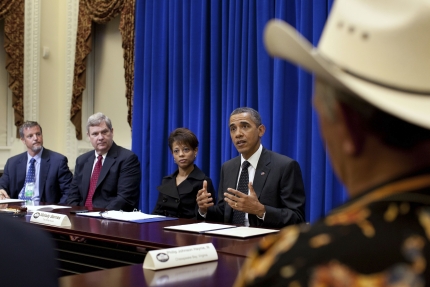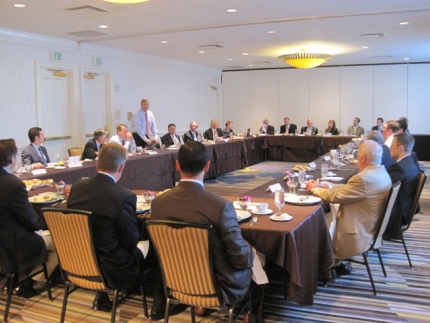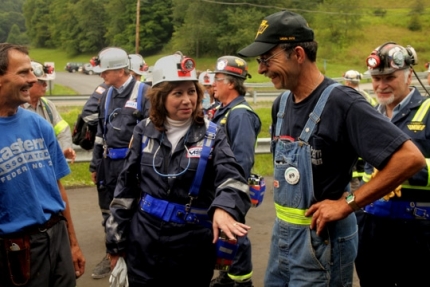Related Rural Blog Posts
Sustainable Agriculture in the Midwest
Posted by on July 19, 2011 at 9:59 AM EDTEd. Note: Champions of Change is a weekly initiative to highlight Americans who are making an impact in their communities and helping our country rise to meet the many challenges of the 21st century.
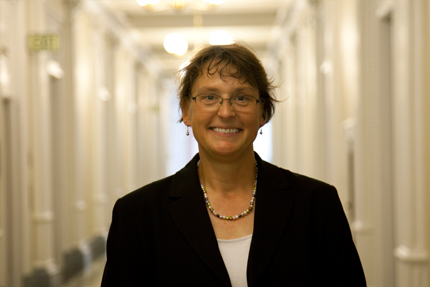
It was a privilege to be among the Champions of Change for Rural America. What an amazing group of people. I was heartened to meet my fellow champions, to hear their stories and to witness their passion.
In rural Iowa we grow a good deal of the nation’s corn and soybeans. We have the richest soil in the U.S. and yet we import more than 85% of food we eat from outside our state. Our farmers are aging; the average age of a farmer in the U.S. is about 58. Few young people have aspirations to become farmers. Our rural landscape is littered with small towns devoid of businesses, shrinking schools, and for some, a sense of hopelessness. It astounded me, this rural decay in the midst of such rich land.
I am a professor of biology at Marshalltown Community College. I am also a small organic farmer who along with my family raises fruit, vegetables and some livestock. I knew what the land could produce. I knew that our community could feed and employ itself far better if we grew their own produce. To that end I proposed that we develop the Entrepreneurial and Diversified Agriculture program at the community college. This a two year degree program preparing new farmers to grow and market diverse crops locally.
Learn more about Energy and Environment, RuralLinking Technology and Higher Education with the Private Sector
Posted by on July 18, 2011 at 7:10 PM EDTEd. Note: Champions of Change is a weekly initiative to highlight Americans who are making an impact in their communities and helping our country rise to meet the many challenges of the 21st century.
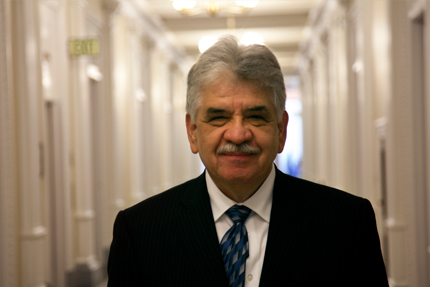
I was deeply honored to be recognized as a Champion of Change on July 6. It was particularly gratifying for me as well as my counterparts from rural America to have the President of the United States visit with us during our roundtable discussion.
In keeping with President Obama’s historic steps to lay the foundation for the innovation economy of the future, it has been my privilege to lead an initiative to develop a Technopolis Village that will leverage and link technology innovators and the resources of higher educational institutions with the private sector to create a technology cluster in the Lower Rio Grande Valley of Texas.
Learn more about RuralRural Champions of Change – Sparking Innovation
Posted by on July 18, 2011 at 6:21 PM EDTEd. Note: Champions of Change is a weekly initiative to highlight Americans who are making an impact in their communities and helping our country rise to meet the many challenges of the 21st century.
One of the most gratifying aspects of working in the White House is that you never know who you might see on a daily basis. A wonderful and diverse cadre of Americans pass through for meetings and events, including renowned scientists, members of the U.S. Armed Forces, and occasionally even entertainment celebrities. Often, these visitors represent the most talented leaders in their respective fields.
With this in mind, I was particularly pleased to recently participate in a Champions of Change roundtable with eighteen Rural Americans, representing the spectrum of excellence in Rural America. The group included farmers, ranchers, local educators, small business owners, and folks who are improving their communities through innovative actions. These rural champions represent the best of the best in their respective fields.
We were honored to be joined by President Obama, who shared his vision for economic growth and development in rural areas. The President highlighted the importance of exports in agricultural areas, and the critical nature of transportation issues. He emphasized the need for high-speed internet access and stated that rural areas should expect to have opportunities equivalent to those in other areas of the nation. The President also discussed the importance of identifying rural Americans’ success stories and sharing that knowledge across the country.
Learn more about RuralMile High City with Mountains of Ideas
Posted by on July 5, 2011 at 11:08 AM EDTLast week, I met with 20 business leaders from all over Colorado at a White House Business Council roundtable in Denver. It was an opportunity for me and my Colorado staff to get feedback on government programs, policies, and innovative ideas that are working to help create jobs – as well as ones that could be improved. Other Cabinet officials and top White House staffers have hosted more than 100 of these sorts of roundtables around the country. And over the coming weeks we will be holding these conversations in rural areas.
In Denver, I heard from business leaders who discussed the value of President Obama’s tax policies for businesses of all sizes, and appreciated the administrations work to better partner with the business community. We had a productive dialogue about how the pending trade agreements with South Korea, Columbia and Panama will benefit local agricultural producers, with the potential to create hundreds of jobs in Greeley, Colorado and other towns. And we discussed how resorts might form partnerships on recreation to make better use of forests and other natural environments to help create jobs in communities throughout the Rocky Mountains.
Everyone in the room agreed that there are incredible opportunities for growth in the economy as long as we believe in the strength and determination of the American people to work hard and innovate.
Collaborating with Tribes through the White House Rural Council
Posted by on July 1, 2011 at 11:55 AM EDTOn June 9th, President Obama signed an Executive Order establishing the first White House Rural Council. While rural communities face challenges, they also present economic potential. The Council will address these challenges, build on the Administration’s rural economic strategy, and improve the implementation of that strategy.
The Council, chaired by Secretary of Agriculture Tom Vilsack, was established to focus on policy initiatives for Rural Americans and will coordinate to increase the effectiveness of federal engagement with tribal governments. According to the 2010 U.S. Decennial Census, 42.6 percent of all Native Americans live in rural areas. In addition, some reservations face unemployment rates of up to 80 percent. The Council will work across federal agencies to address these challenges and promote economic prosperity and quality of life in Indian Country and across rural America. The Council will work to break down silos and find areas for better collaboration and improved flexibility in government programs and will work closely with state, local and tribal governments, non-profits, and the private sector to leverage federal support.
Plans are already underway for the Council to address ways to expand access to capital in rural communities, including an examination of the unique challenges facing Indian Country in increasing the flow of credit to Indian reservations. Economic development and job creation in Indian Country—and in all other sectors of the U.S. economy—depend on access to capital. When credit-worthy business owners can easily borrow to finance business start-up and expansion, the economy thrives. One thing we hear from tribal leaders, however, is that borrowing money for business development in Indian Country is difficult. The reasons range from difficulties in using tribal land as collateral, to the small number of lending institutions serving Indian Country, to lenders’ perceptions that lending to tribal members or tribal governments is risky.
Learn more about RuralOur Covenant with America’s Rural Miners
Posted by on June 24, 2011 at 2:20 PM EDTEditor's Note: Cross-posted from the Blog of the U.S. Department of Labor
From the coal that makes it possible for us to power our computers, to the sand and gravel that serves as the foundation of our nation’s infrastructure, we simply could not function as a country without the natural resources that our miners provide.
Mining and extraction industries have been key drivers of rural economic growth during our recovery, creating 80,000 new jobs in the last year alone. Nationally, this sector employs nearly 730,000 people in communities from Appalachia to the American West. For some raised in rural communities where mining is a way of life, this work is part of their family DNA, a profession “handed down” from one generation to the next. For others, a career in the mines is a ticket to a better life for their families. According to our Bureau of Labor Statistics, continuous mining machine operators have an average base pay of $48,000 a year, while supervisors earn more than $70,000.
As a member of President Obama’s Rural Council, I am committed to helping miners get the training they need to harness our natural resources in a safe and cost-effective way. As rising gas prices continue to place strains on middle class families, it’s critical that we support the workers responsible for producing our domestic energy supply.
This commitment starts with maintaining a well-qualified workforce. During the next decade, some 50,000 new workers will have to be trained to replace the mining industry’s aging labor force. Recognizing this challenge, my department has awarded grants to a variety of rural stakeholders to develop training programs tailored to meet the employment needs of local industry.
The projects are as unique as the rural communities that they serve: Penn State University is using special simulators to teach students how to operate sophisticated machinery when down in the mines. Northern Wyoming Community College partnered with Penn State and devised a mobile laboratory to give students on-site training at local coal mines. The Alaska Department of Labor increased mining apprenticeship opportunities and developed a web portal to help Alaskans find jobs in the mining and energy sectors. The College of Eastern Utah offers mining classes to Hispanics and Native Americans in their unique languages. West Virginia University’s Mine Training and Placement Center provides instruction on everything from ventilation techniques to infection control to accident prevention for mineral miners.
But our investment in skills training is only part of our covenant with miners in rural America. The Obama administration is committed to aggressive enforcement of mine safety laws. Our country has a duty to ensure these workers return home to their families each day in the same condition they went to work.
My department’s Mine Safety & Health Administration has rewritten our regulations to toughen worker safety standards, strengthened our enforcement efforts to identify potential hazards, partnered with mining companies to improve emergency response time and rescue capability, and cracked down on operators that cut corners on safety and put workers at risk.
It has been 14 months since the explosion at West Virginia’s Upper Big Branch mine claimed 29 lives. I will never forget traveling to rural West Virginia to stand vigil with the miners’ families in those tense hours when rescue operations were still ongoing. For me, the lesson of the Upper Big Branch tragedy couldn’t be clearer: hazards are to be abated, mines are to be made safe and mine operators are to be held responsible for safety problems they do not fix. We owe nothing less than this strong commitment to the mining families of rural America.
- &lsaquo previous
- …
- 22
- 23
- 24
- 25
- 26
- 27
- 28
- 29
- 30
- …
- next &rsaquo
